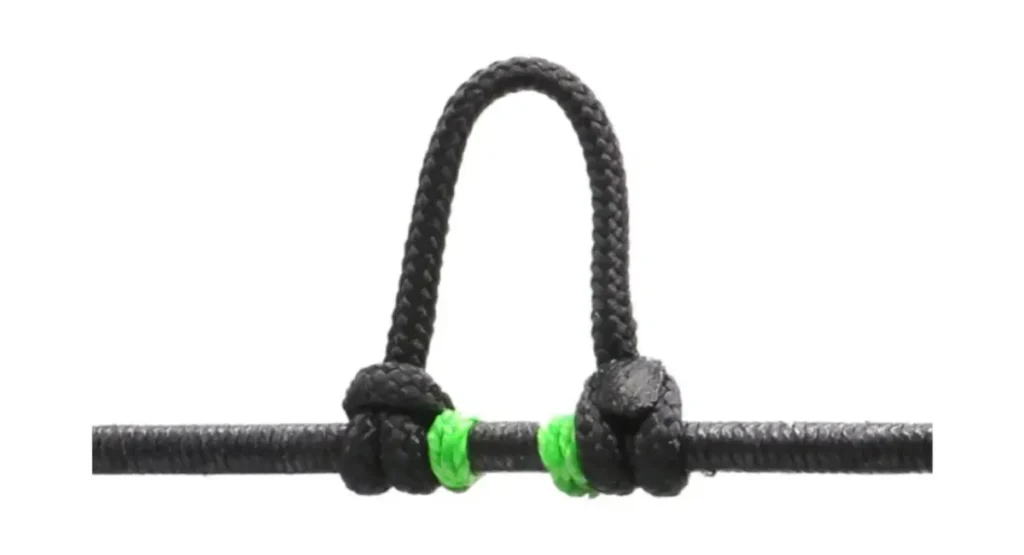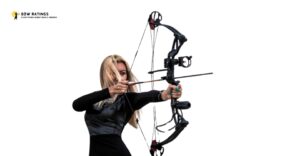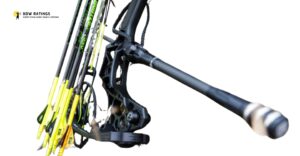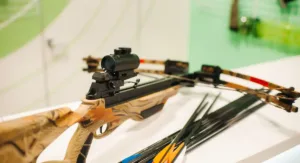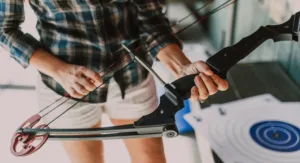Archery requires precision. Whether you’re a seasoned bow hunter or a budding archery enthusiast, consistent accuracy requires skill, patience, and the right equipment. One often overlooked yet essential component of compound bow archery is the D-Loop. This small piece of gear can significantly impact your shot performance.
In this comprehensive guide, we’ll explore the ins and outs of mastering the D-Loop, offering valuable insights and practical tips to enhance your archery experience.
What Is A D-Loop?
At its core, a D-Loop is a short piece of cord attached to the bowstring of a compound bow, forming a loop where the release aid hooks onto. D-Loops provide a consistent nocking point for arrows, ensuring uniformity with each shot. Positioned precisely on the bowstring, the D-Loop enhances nocking point accuracy and protects the bowstring from premature wear and tear during releases.
For many archers, the D-Loop serves as an anchor point for their bow release technique, allowing for a more controlled and precise shot. By reducing direct contact between the bowstring and the release aid, a well-tied D-Loop can substantially improve bowstring performance and longevity, making it an invaluable addition to any archer’s setup.
Master Your Aim With The Ultimate Guide To Archery Targets
Aim True With 3d Archery Targets And Hit The Mark Every Time
Types Of D-Loops
Material Options
When selecting a D-Loop, material is the first consideration. Common options include nylon, polyester, and other durable materials. Nylon D-Loops are popular for their elasticity, providing smooth release and reducing slippage risk.
Polyester, on the other hand, offers greater consistency and less stretch, ideal for archers seeking a firmer nocking point. While both materials have their merits, the choice ultimately depends on your shooting style and preferences.
Different Lengths And Thicknesses
The size of your D-Loop can also greatly affect accuracy and consistency. Short loops offer a more direct connection to the release aid, while longer loops provide additional flexibility and comfort. Thickness is another factor to consider—thicker loops tend to be more durable, but may require adjustments to maintain a proper bow nocking point.
Choosing The Right D-Loop
Selecting the right D-Loop involves expert recommendations tailored to your bow type and archer experience. For beginners, starting with a standard loop size and gradually experimenting with lengths and materials is advisable. Experienced archers often customize their D-Loops to fine-tune their bow release technique for optimal performance.
Step-By-Step Guide To Tying A D-Loop
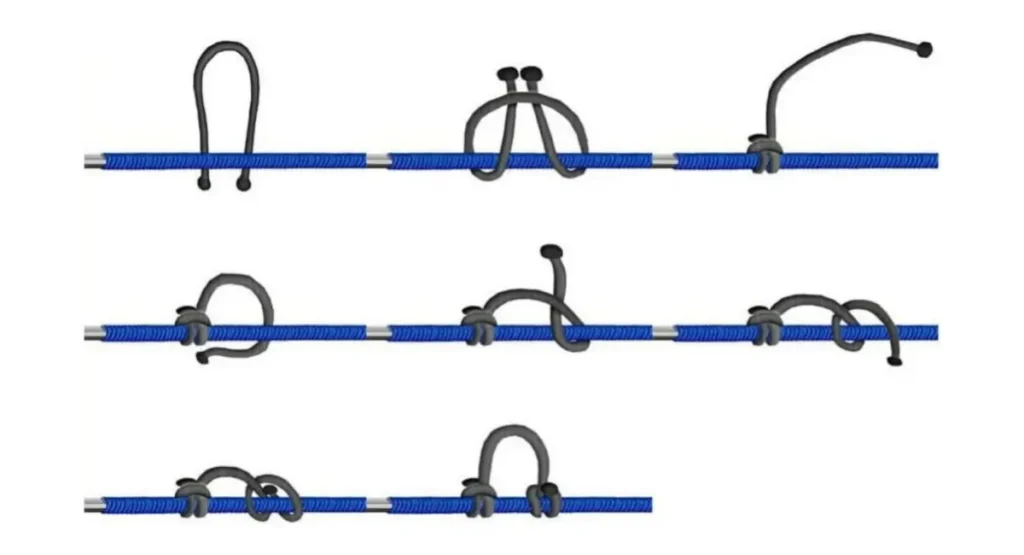
Tying a D-Loop might seem daunting at first, but with the right tools and techniques, it becomes easy. Here’s a detailed guide to help you get started:
Materials Needed:
- D-Loop material (nylon or polyester).
- Pliers
- Scissors
- Lighter
Step-By-Step Instructions:
- Cut a length of D-Loop material, typically around 4-5 inches.
- Create a loop around the bowstring, ensuring the ends face in opposite directions.
- Tie an overhand knot on each end, cinching it tightly to the bowstring.
- Use pliers to secure the knots, ensuring they are firm but not overly tight.
- Melt the ends with a lighter to prevent fraying.
Troubleshooting Tips:
- If the D-Loop slips, ensure the knots are securely tied and apply additional tension.
- In case of improper knot tightness, use pliers to adjust and retie as needed.
For More Information Also Read : How To Tie A D-Loop For Successful Archery
D-Loop Maintenance And Longevity
Maintaining your D-Loop is crucial for consistent performance and safety. Common issues such as fraying, slippage, and wear can compromise its effectiveness.
Expert Tips To Extend Your D-Loop Life:
- Regularly inspect your D-Loop for wear, especially before practice sessions or competitions.
- Replace your D-Loop every few months or sooner if wear signs are apparent.
- Store your bow in a cool, dry place to prevent premature D-Loop damage.
Advanced Tips To Optimize Performance
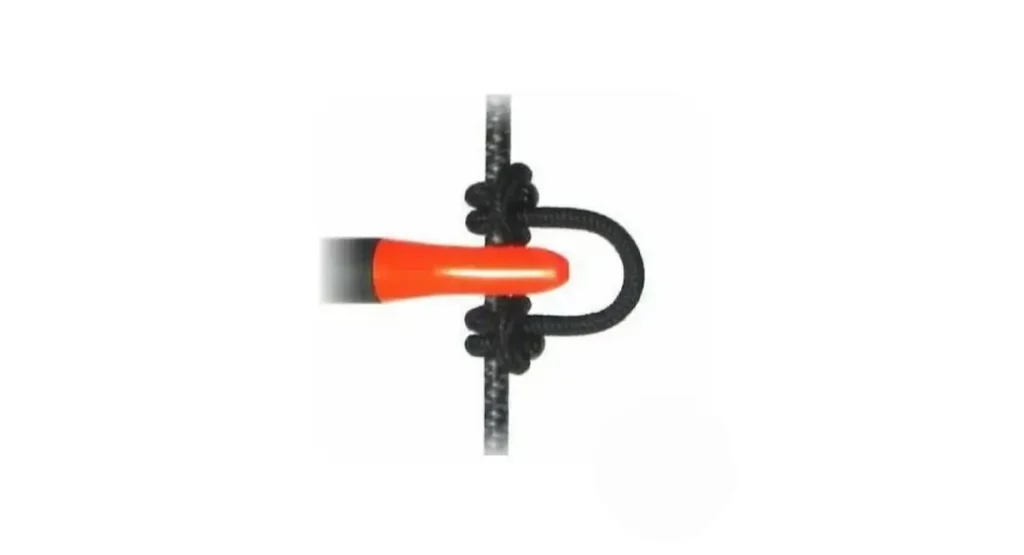
Impact On Shot Accuracy
A properly set D-Loop can significantly impact shot accuracy by ensuring consistent nocking point alignment. Adjustments to the D-Loop can accommodate different draw lengths and bow tensions, optimizing your setup for maximum precision.
Professional Insights On D-Loop Accessories
Utilizing D-Loop pliers effectively can make adjustments easier and more precisely. Additionally, adjusting release aids for consistent shooting further enhances accuracy and overall performance. Small refinements to your D-Loop setup can improve your archery experience.
A Comprehensive Guides of Traditional Archery Quiver
Large Archery Targets: The Art Of Mastering The Art Of Archery
How To Wax Your Bow String – Master The Art For Optimal Archery Performance
Expert Opinions And Recommendations
“The D-Loop is truly a game-changer for archers, providing unparalleled precision and consistency in arrow nocking.”
According to John Doe, a seasoned professional archer.
His endorsement is further supported by Emma Smith, a skilled archery instructor, who notes,
“Selecting the right D-Loop material and size is vital to reduce bowstring wear, ensuring that your setup lasts longer and performs at its best.”
Competitive bow hunter Mike Johnson emphasizes the intricate skill required to tie a D-Loop, asserting,
“Even minor adjustments in positioning can dramatically enhance your accuracy.”
To maintain optimal performance, prioritize regular upkeep.
Alex Brown, the owner of a local archery pro shop, advises,
“Always inspect your D-Loop for signs of wear—it’s a small step that can make a significant difference in your shooting experience.”
Incorporate these expert insights to elevate your archery game and ensure your equipment remains in top-notch condition!
Common Mistakes To Avoid
Despite its simplicity, installing and using a D-Loop can lead to common mistakes that hinder performance. Tying the knot too tightly, for instance, limits flexibility and increases bowstring wear. Conversely, low-quality rope may result in frequent D-Loop fraying and slippage.
Preventive Measures:
- Invest in high-quality D-Loop materials to ensure durability and reliability.
- Follow proper knot-tying techniques to avoid complications during use.
- Seek professional guidance or watch instructional videos for visual reference.
Mastering The Peep Sight On A Bow For Unmatched Accuracy
Mastering Precision: What Does A Stabilizer Do In Archery?
How To Sight In A Bow – Master The Art Of Always Hitting Your Target
Conclusion
The D-Loop enhances your archery performance, improving accuracy and consistency. By understanding its function, choosing the right materials, and maintaining it regularly, you can harness its full potential. This will enhance your archery skills.
Ready to take your archery to the next level? Implement the techniques shared in this guide and experience the difference a well-installed D-Loop can make. Join the community of archers who have mastered precision with this indispensable tool.
Frequently Asked Questions (FAQs)
What Is A D-Loop In A Compound Bow?
A D-Loop is a small loop of cord attached to the bowstring, providing a consistent nocking point for arrows and protecting the bowstring from wear.
How Do You Tie A D-Loop On A Bowstring?
Tying a D-Loop involves wrapping a cord around the bowstring, tying overhand knots, and securing them tightly. It’s essential to use pliers and melt the ends to prevent fraying.
What Is The Right Material For A D-Loop?
Nylon and polyester are popular choices, with nylon offering elasticity and polyester providing consistency. The right material depends on your shooting style and preference.
How Often Should A D-Loop Be Replaced?
Replace your D-Loop every few months or when signs of wear, such as fraying or slippage, become apparent.
Can A D-Loop Improve Shooting Accuracy?
Yes, a properly installed D-Loop enhances shot accuracy by providing a consistent nocking point and reducing bowstring wear.
What Are Common Mistakes To Avoid When Tying A D-Loop?
Avoid tying the knot too tightly, using low-quality materials, and neglecting regular maintenance, as these can impact performance and safety.
Recommended Articles
- 10 Must Know Archery Terms For Beginners
- 6 Mind-Blowing Best Compound Bow For Women
- 7 Best Compound Bow for Beginners for Starting Your Archery Journey
- 7 Viral & Best Recurve Bow For Beginners in 2024
- A Complete Guide To Essential Parts Of A Crossbow
- A Comprehensive Beginners Guide Of Compound Bow Cams

